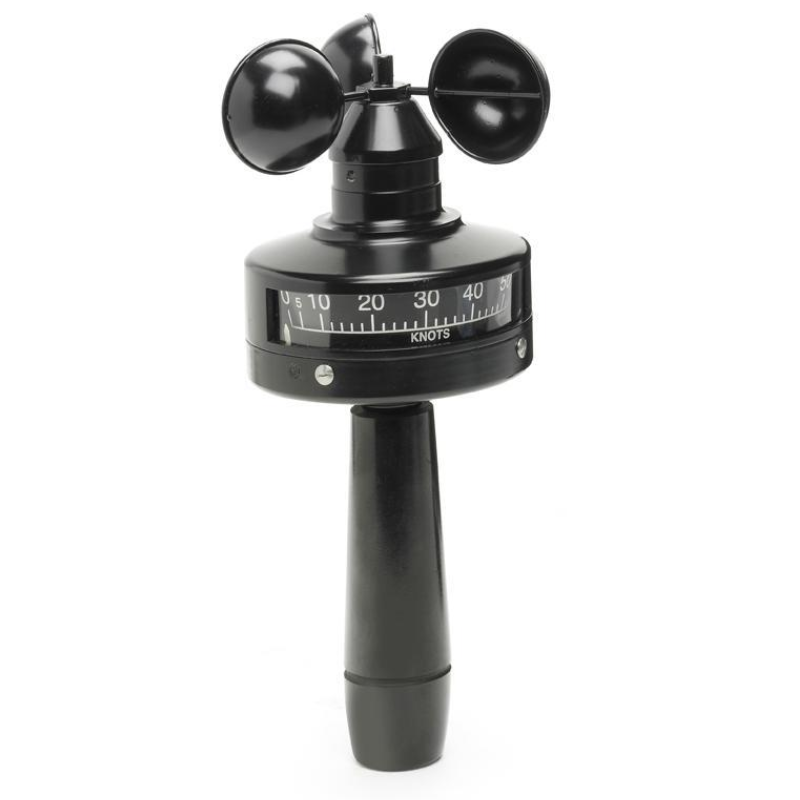A cup anemometer is a device specifically designed to measure wind speed. Its design is straightforward: a set of three or four cups mounted on arms that spin as the wind blows. Unlike other anemometer types, such as vane or hot-wire anemometers, the cup anemometer stands out for its durability and ease of use.
History of the Cup Anemometer
The origins of wind measurement date back centuries. However, the cup anemometer as we know it today was invented by Thomas Robinson in 1846. Since then, it has undergone modifications, making it one of the most commonly used wind speed measurement tools worldwide.
Parts of a Cup Anemometer
To understand how it works, let’s break down its parts:
- Cups: These are the most recognizable part of the anemometer, usually three or four cups that catch the wind.
- Vertical Shaft: Connects the cups and rotates as they spin.
- Rotating Arms: Extend outward from the shaft, holding the cups in place.
- Sensor System: In modern versions, sensors detect rotation speed to calculate wind speed digitally.
How Does a Cup Anemometer Work?
The basic principle is simple: wind hits the cups, causing them to spin. The faster the wind, the quicker the rotation. By measuring how many times the cups spin per second, we can determine the wind speed.
Mechanics of Measuring Wind Speed with Cups
The rotation speed of the cups is directly related to wind speed. As the wind pushes the cups, they move faster or slower, depending on the wind’s strength. This rotational speed is calibrated to give an accurate wind speed reading.
Calculating Wind Speed
To calculate wind speed, the cup anemometer uses a mathematical correlation between the number of rotations and wind speed. For example, if the cups rotate 10 times per second, it translates into a specific wind speed, which can be calculated using standardized formulas.
Digital vs. Mechanical Cup Anemometers
Traditional mechanical cup anemometers rely solely on physical rotation for measurements. In contrast, modern digital cup anemometers have sensors to count rotations electronically, providing a more precise and convenient reading.
Importance of Calibration
Calibration is critical to maintaining accurate readings. Over time, the instrument may drift from its initial calibration due to wear and environmental factors. Regular calibration ensures that readings remain accurate.
Applications of Cup Anemometers
Cup anemometers are widely used in various fields:
- Meteorology: For accurate weather forecasting
- Aviation and Marine: Helping ensure safe travel by understanding wind conditions
- Renewable Energy: Essential in assessing wind farm sites for optimal energy production
Advantages of Using Cup Anemometers
One of the main advantages is simplicity. Cup anemometers have few moving parts, making them durable and easy to maintain. Additionally, they provide reliable measurements in a wide range of wind conditions.
What is the most accurate type of anemometer?
Different types have specific advantages, but for general wind speed, cup anemometers are among the most accurate and reliable options.
How does weather affect a cup anemometer?
Weather can affect accuracy, especially in extreme conditions, but routine maintenance can mitigate this.
Can a cup anemometer measure wind direction?
No, cup anemometers measure only speed. However, combined instruments can measure both speed and direction.
What is the lifespan of a cup anemometer?
With proper maintenance, a cup anemometer can last many years, depending on its materials and build quality.








